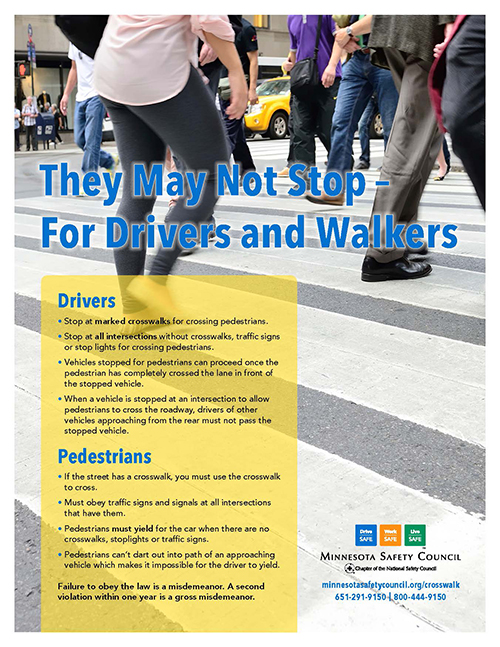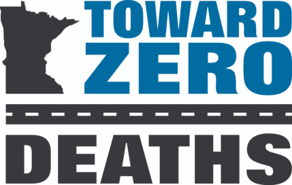Crosswalks
Minnesota State Statutes 169.21 provides details regarding the state law on crosswalks. The Statutes state that where traffic-control signals are not in place or in operation, the driver of a vehicle shall stop to yield the right-of-way to a pedestrian crossing the roadway within a marked crosswalk or at an intersection with no marked crosswalk. The driver must remain stopped until the pedestrian has passed the lane in which the vehicle is stopped. No pedestrian shall suddenly leave a curb or other place of safety and walk or run into the path of a vehicle which is so close that it is impossible for the driver to yield.
National studies have shown that marked crosswalks at uncontrolled locations have a higher pedestrian crash rate compared to unmarked crosswalks at the same types of locations for those roads with high traffic volumes and multiple driving lanes. At best, for two-lane roads with lower traffic volumes, there was no difference in the rate of pedestrian crashes for marked versus unmarked crosswalks at uncontrolled locations. Considerations for installing a marked crosswalk need to include pedestrian volume, traffic volume, available stopping sight distance for drivers, distance to the nearest crosswalk, number of driving lanes, and speed of vehicles. Crosswalks do have their appropriate place; however, they should not be looked at as safety devices because they are not.

